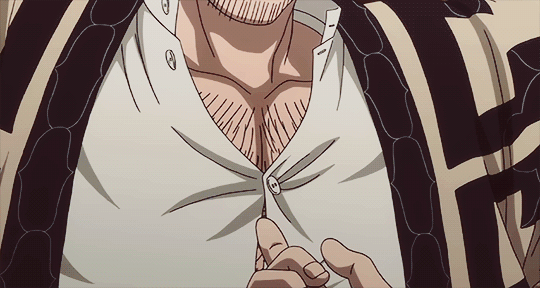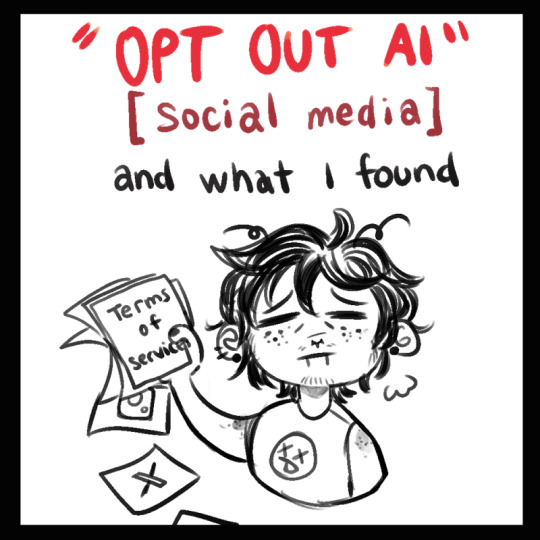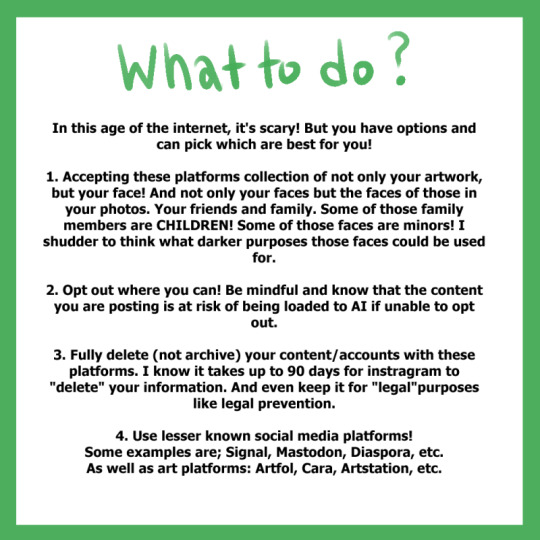#also this is from a mobile screenshot
Explore tagged Tumblr posts
Text

I can't believe rindo plays the square enix equivalent of pokemon go and the fact it existed in the beautiful year of 2007 (I guess??????)
#how do twewy years work what year did og twewy take place in i always assumed 2007 bc the game . came out in 20p7#2007* typo in the last tag and im on mobile#like what#anyways i think its funny ntwewy starts with rindo playing pokemon go that made me giggle#i think he should play pikmin bloom too#the world ends with you#twewy#neo twewy#rindo kanade#doodles#also thats a real screenshot i took from my pokego account btw
305 notes
·
View notes
Text

three cheers for amuro's birthday
#amuro ray#mobile suit gundam#gundam 0079#mobile suit zeta gundam#char's counterattack#art tag#ended up doing birthday chibis again because i want more practice with that style#but also because i always procrastinate on birthday art lol#i colorpicked the palettes for all 3 of these guys from the huge vault of screenshots i have of their respective shows/movies
81 notes
·
View notes
Text






this is so funny. thanks for the moral support kay
#[is flirted with by a woman] is this some kind of attack??#tbf in this case I feel like it kind of was#but this is also how he reacts to attention from Literally Any Woman so#ace attorney#aai2#edited to add alt text#i always post these things to get two likes from my mutuals and then people want to reblog miles edgeworth#sidenote really annoying that the little alt text thing on mobile covers the in-image text of an ace attorney screenshot#mine
74 notes
·
View notes
Text

It's hereeeeeeee
#neri.txt#i got the mobile preregistration notif at like 4am#and were so tempted to just get up and immediately install it#for peeps who don't know this game series: it's dress-up game serie#but for some reason they decided to make this newest one into “open world adventure game”#i'm SO curious to see what it's like#also vaguely related fun fact: ton of xiv hair (and some outfits) used to be just ported from the previous entry (shining nikki)#idk if people still do that tbh#but it used to be fun going through some tags like “hair used is abc!” “no that's xyz from shining” lol#anyway!#pray for my laptop it'd already low on space#who'd thought 3 mmos and bazillion screenshots take up so much space /s
3 notes
·
View notes
Text
RPG STATS


Tagged: @oroanillado
Tagging: whoever should be in bed instead >:)
#headcanons || fox#still no dash games tag rip#Also only screenshot from me bc lazy and mobile bound lol#Mage is interesting tho...
9 notes
·
View notes
Text


And there's that free will that recognizes she did something wrong. It's still there, it's just buried underneath 17 years of listening to Prospera without question. She'll get there.
#even if this is . admittedly. not the best timing for ut#*it#mobile suit gundam the witch from mercury#suletta mercury#miorine rembran#also#tw blood#bc that last screenshot is a Lot skdjdksks#smokey watches
32 notes
·
View notes
Note
So, Jess I know you’re not an artist like your bestie in the entire world snap… but what does your art look like I remember you doodled this little pic for me of Tien with Choatzu’s make up lol but have you’ve drawn anything else?










Ya
#i draw a lot i just dont post it all the time bc well... sometimes i dont like em sometimes i forget sometimes its just a personal lil thing#i havent painted for months bc i lost my paints but Snap actually bought me some replacements for my birthday the other day so 🫶#maybe i'll try and paint daigo or somethin and post it sometime soonish#in his honour#or maybe Tsutumi bc i like his face it might be fun to do................#or another baba since i sure like daito#or maybe i will just continue doin the boys from my REDACTED group lioe i have been the past few months#i have done haruka and majima but i couldnt find the posts in my tag and im dying of a flu or maybe covid (real not clickbait)#so i dont feel like gettin up n goin on my computer. i mostly had to screenshot these from insta lol#but yeah. i do also do stuff :)#ask#also yeah we made exactly 5 days into the year before my body decided to fuck me over so uhhhhhhh bodes well#genuinely feel like ive been hit by a truck and i have such a bad headache still havent played gaiden 😭#also why does answering on tumblr mobile app lately be so weird ???#like freezes the app keeps reloading cant look at notifs til i close it and reopen ? anyone else have that issue
11 notes
·
View notes
Text

been playing hello kitty island adventure recently it’s been a lot of fun!! gonna get back into animal crossing soon thou honestly i just haven’t been playing on my switch that much
#i might post some cute screenshots from this game honestly#it reminds me a lot of animal crossing but it’s a mobile game#also i got apple arcade free for like a month that’s the only reason i’ve been playing it#max.txt#hello kitty island adventure
3 notes
·
View notes
Text
music tag game
♪((└|o^▽^o|┐))
tagged by @princeofpittsburgh —i am slow-blinking at u, thank youuu!!
>first 10 tracks from my music shuffled and (maybe) 10 people tagged










tagging @phantomnations @the-kleptomancer @unheoly-confessions @amilva @regret-breathing @exitstageleft-pursuedbyabear (no pressure of course) and anyone else who wants to do this 👉😎👉
#took screenshots cuz i’m on mobile#love tag games especially the music ones ^^#theo i appreciate u man <3#(if you’re a mutual and would like to be tagged in these pls like and i’ll remember for next time)#cuz i’m never completely sure who actually likes tag games…#also the regular version of playing god is way better than the ‘beat version’#all the non-vocal tracks on ‘remember that you will die’ are actually incredible btw big rec from me if u like prog rock#tag games
3 notes
·
View notes
Text






#golden kamuy#if you're wondering why all the text is screenshots it's because technology is dog shit always#couldn't save the gif in any way that wasn't a still fucking image unless I shared it directly from google to tumblr#no clue why. my phone can and will save gifs. I don't know which part of the process was even being the dog shit.#but apparently tumblr mobile also thinks it's illegal to paste text into drafts.#which is so inanely stupid that I feel like *I* got lobotomized just from finding that out.#like. wow. the one thing that all humans on earth would first want to do with a draft function.#so yeah this post is lucky I didn't just kill it for being literally too much effort to accomplish.
4 notes
·
View notes
Text
y'all, I'm dying. I was tagged in this meme by @marchionessofbones
Directions: Post a screencap of your lock screen photo, a screencap of the last/current song listened to, as well as the last photo of a celebrity that you saved in your phone.
My lockscreen is the phone default that I never got around to changing. The last song I listened to is Splish Splash by Bobby Darin. And the closest thing I have to a recently saved celebrity photo is....King Charles I of England

#this is hilarious to me#I don't think I'm the intended audience for this meme#honestly it's only by luck that the song wasn't Old McDonald Had a Farm#Splish Splash is also from the toddler's playlist lmao#posts#thanks for tagging me though!#talking#not posting a screenshot of the song because multiple images turn out to be really annoying on the mobile web interface
2 notes
·
View notes
Text
🍉🇵🇸 eSims for Gaza masterpost 🇵🇸🍉
Which eSims are currently being called for?
Connecting Humanity is calling for:
Nomad (“regional Middle East” plan): code NOMADCNG
Simly (“Palestine” plan)
Gaza Online is calling for:
Holafly (“Israel” and “Egypt” plans): code HOLACNG
Nomad (“regional Middle East” plan): code NOMADCNG (can now be used multiple times from the same email)
Airalo (“Middle East and North Africa” plan)
Sparks (“Israel” plan)
Numero (“Egypt” plan)
For Connecting Humanity: if you sent an eSim more than two weeks ago and it is still valid and not yet activated, reply to the email in which you originally sent the eSim. To determine whether the eSim is still valid, scan the QR code with a smartphone; tap the yellow button that reads “Cellular plan”; when a screen comes up reading “Activate eSIM,” click the button that says “Continue.” If a message comes up reading “eSIM Cannot Be Added: This code is no longer valid. Contact your carrier for more information,” the eSim is activated, expired, or had an error in installation, and should not be sent. It is very important not to re-send invalid eSims, since people may walk several kilometers to access wifi to connect their eSims only to find out that they cannot be activated.
If a screen appears reading “Activate eSIM: An eSIM is ready to be activated” with a button asking you to “Continue,” do not click “Continue” to activate the eSim on your phone; exit out of the screen and reply to the email containing that QR code.
Be sure you're looking at the original post, as this will be continually updated. Any new instructions about replying to emails for specific types of unactivated plans will also appear here.
Check the notes of blackpearlblasts's eSim post, as well as fairuzfan's 'esim' tag, for referral and discount codes.
How do I purchase an eSim?
If you cannot download an app or manage an eSim yourself, send funds to Crips for eSims for Gaza (Visa; Mastercard; Paypal; AmEx; Canadian e-transfer), or to me (venmo @gothhabiba; paypal.me/Najia; cash app $NajiaK, with note “esims” or similar; check the notes of this post for updates on what I've purchased.)
You can purchase an eSim yourself using a mobile phone app, or on a desktop computer (with the exception of Simly, which does not have a desktop site). See this screenreader-accessible guide to purchasing an eSim through each of the five services that the Connecting Humanity team is calling for (Simly, Nomad, Mogo, Holafly, and Airalo).
Send a screenshot of the plan's QR code to [email protected]. Be sure to include the app used, the word "esim," the type of plan (when an app has more than one, aka "regional Middle East" versus "Palestine"), and the amount of data or time on the plan, in the subject line or body of your email.
Message me if you have any questions or if you need help purchasing an eSim through one of these apps.
If you’re going to be purchasing many eSims at once, see Jane Shi’s list of tips.
Which app should I use?
Try to buy an eSim from one of the apps that the team is currently calling for (see above).
If the team is calling for multiple apps:
Nomad is best in terms of data price, app navigability, and ability to top up when they are near expiry; but eSims must be stayed on top of, as you cannot top them up once the data has completely run out. Go into the app settings and make sure your "data usage" notifcations are turned on.
Simly Middle East plans cannot be topped up; Simly Palestine ones can. Unlike with Nomad, data can be topped up once it has completely run out.
Holafly has the most expensive data, and top-ups don't seem to work.
Mogo has the worst user interface in my opinion. It is difficult or impossible to see plan activation and usage.
How much data should I purchase?
Mirna el-Helbawi has been told that large families may all rely on the same plan for data (by setting up a hotspot). Some recipients of eSim plans may also be using them to upload video.
For those reasons I would recommend getting the largest plan you can afford for plans which cannot be topped up: namely, Simly "Middle East" plans, and Holafly plans (they say you can top them up, but I haven't heard of anyone who has gotten it to work yet).
For all other plans, get a relatively small amount of data (1-3 GB, a 3-day plan, etc.), and top up the plan with more data once it is activated. Go into the app’s settings and make sure low-data notifications are on, because a 1-GB eSIM can expire very quickly.
Is there anything else I need to do?
Check back regularly to see if the plan has been activated. Once it's been activated, check once a day to see if data is still being used, and how close the eSim is to running out of data or to expiring; make sure your notifications are on.
If the eSim hasn't been activated after three weeks or so, reply to the original email that you sent to Gaza eSims containing the QR code for that plan.
If you purchased the eSim through an app which has a policy of starting the countdown to auto-expiry a certain amount of time after the purchase of the eSim, rather than only upon activation (Nomad does this), then also reply to your original e-mail once you're within a few days of this date. If you're within 12 hours of that date, contact customer service and ask for a credit (not a refund) and use it to purchase and send another eSim.
How can I tell if my plan has been activated? How do I top up a plan?
The Connecting Humanity team recommends keeping your eSims topped up once they have been activated.
See this guide on how to tell if your plan has been activated, how to top up plans, and (for Nomad) how to tell when the auto-expiry will start. Keep topping up the eSim for as long as the data usage keeps ticking up. This keeps a person or family connected for longer, without the Connecting Humanity team having to go through another process of installing a new eSim.
If the data usage hasn't changed in a week or so, allow the plan to expire and purchase another one.
What if I can't afford a larger plan, or don't have time or money to keep topping up an eSim?
I have set up a pool of funds out of which to buy and top up eSims, which you can contribute to by sending funds to my venmo (@gothhabiba), PayPal (paypal.me/Najia), or cash app ($NajiaK) (with note “esims” or similar). Check the notes of this post for updates on what I've purchased, which plans are active, and how much data they've used.
Crips for eSims for Gaza also has a donation pool to purchase eSims and top them up.
Gaza Online (run by alumni of Gaza Sky Geeks) accepts monetary donations to purchase eSims as needed.
What if my eSim has not been activated, even after I replied to my email?
Make sure that the QR code you sent was a clear screenshot, and not a photo of a screen; and that you didn’t install the eSim on your own phone by scanning the QR code or clicking “install automatically."
Possible reasons for an eSim not having been activated include: it was given to a journalist as a back-up in case the plan they had activated expired or ran out of data; there was an error during installation or activation and the eSim could no longer be used; the eSim was installed, but not activated, and then Israeli bombings destroyed the phone, or forced someone to leave it behind.
An eSim that was sent but couldn’t be used is still part of an important effort and learning curve. Errors in installation, for example, are happening less often than they were in the beginning of the project.
Why should I purchase an eSim? Is there any proof that they work?
Israel is imposing near-constant communications blackouts on Gaza. The majority of the news that you are seeing come from Gaza is coming from people who are connected via eSim.
eSims also connect people to news. People are able to videochat with their family for the first time in months, to learn that their family members are still alive, to see their newborn children for the first time, and more, thanks to eSims.
Some of this sharing of news saves lives, as people have been able to flee or avoid areas under bombardment, or learn that they are on evacuation lists.
Why are different plans called for at different times?
Different eSims work in different areas of the Gaza Strip (and Egypt, where many refugees currently are). The team tries to keep a stockpile of each type of sim on hand.
Is there anything else I can do to help?
There is an urgent need for more eSims. Print out these posters and place them on bulletin boards, in local businesses, on telephone poles, or wherever people are likely to see them. Print out these foldable brochures to inform people about the initiative and distribute them at protests, cafes and restaurants, &c. Also feel free to make your own brochures using the wording from this post.
The Connecting Humanity team is very busy connecting people to eSims and don't often have time to answer questions. Check a few of Mirna El Helbawi's most recent tweets and see if anyone has commented with any questions that you can answer with the information in this post.
14K notes
·
View notes
Text







I spent the evening looking into this AI shit and made a wee informative post of the information I found and thought all artists would be interested and maybe help yall?
edit: forgot to mention Glaze and Nightshade to alter/disrupt AI from taking your work into their machines. You can use these and post and it will apparently mess up the AI and it wont take your content into it's machine!
edit: ArtStation is not AI free! So make sure to read that when signing up if you do! (this post is also on twt)
[Image descriptions: A series of infographics titled: “Opt Out AI: [Social Media] and what I found.” The title image shows a drawing of a person holding up a stack of papers where the first says, ‘Terms of Service’ and the rest have logos for various social media sites and are falling onto the floor. Long transcriptions follow.
Instagram/Meta (I have to assume Facebook).
Hard for all users to locate the “opt out” options. The option has been known to move locations.
You have to click the opt out link to submit a request to opt out of the AI scraping. *You have to submit screenshots of your work/face/content you posted to the app, is curretnly being used in AI. If you do not have this, they will deny you.
Users are saying after being rejected, are being “meta blocked”
People’s requests are being accepted but they still have doubts that their content won’t be taken anyways.
Twitter/X
As of August 2023, Twitter’s ToS update:
“Twitter has the right to use any content that users post on its platform to train its AI models, and that users grant Twitter a worldwide, non-exclusive, royalty-free license to do so.”
There isn’t much to say. They’re doing the same thing Instagram is doing (to my understanding) and we can’t even opt out.
Tumblr
They also take your data and content and sell it to AI models.
But you’re in luck!
It is very simply to opt out (Wow. Thank Gods)
Opt out on Desktop: click on your blog > blog settings > scroll til you see visibility options and it’ll be the last option to toggle
Out out of Mobile: click your blog > scroll then click visibility > toggle opt out option
TikTok
I took time skim their ToS and under “How We Use Your Information” and towards the end of the long list: “To train and improve our technology, such as our machine learning models and algorithms.”
Regarding data collected; they will only not sell your data when “where restricted by applicable law”. That is not many countries. You can refuse/disable some cookies by going into settings > ads > turn off targeted ads.
I couldn’t find much in AI besides “our machine learning models” which I think is the same thing.
What to do?
In this age of the internet, it’s scary! But you have options and can pick which are best for you!
Accepting these platforms collection of not only your artwork, but your face! And not only your faces but the faces of those in your photos. Your friends and family. Some of those family members are children! Some of those faces are minors! I shudder to think what darker purposes those faces could be used for.
Opt out where you can! Be mindful and know the content you are posting is at risk of being loaded to AI if unable to opt out.
Fully delete (not archive) your content/accounts with these platforms. I know it takes up to 90 days for instagram to “delete” your information. And even keep it for “legal” purposes like legal prevention.
Use lesser known social media platforms! Some examples are; Signal, Mastodon, Diaspora, et. As well as art platforms: Artfol, Cara, ArtStation, etc.
The last drawing shows the same person as the title saying, ‘I am, by no means, a ToS autistic! So feel free to share any relatable information to these topics via reply or qrt!
I just wanted to share the information I found while searching for my own answers cause I’m sure people have the same questions as me.’ \End description] (thank you @a-captions-blog!)
4K notes
·
View notes
Text
Disability Tropes: The Perfect Prosthetic

[ID: A screenshot from the movie Nimona, showing Nimona, a small white girl with red hair, grabbing the right prosthetic arm of Ballister, a knight in black armour with black hair and light brown skin. He is holding a broken bottle in his prosthetic hand while Nimona admires his arm. Overlaid on the screenshot is white text that reads "Disability Tropes: The Perfect Prosthetic" /End ID]
In a lot of media, prosthetic limbs are portrayed as these devices that act as a near-perfect replacement for a character who has lost, or was born without a limb. So much so that in a lot of cases, the use of a prosthetic has basically no impact on the character beyond a superficial level or their appearance, or it's portrayed as something that's even better than the old meat-limb it's replacing. This trope shows up most often in Sci-fi, but it shows up in all kinds of stories outside of that, even otherwise very grounded ones!
If a story isn't depicting the loss of a limb as the be-all-end-all worst thing that can happen to a person, they almost always default to a perfect prosthetic, functionally curing the amputation with it. But the reality is that prosthetics are FAR from perfect, and as someone who has used them for their entire life I don't think they ever will be. Limb difference is still and always will be a disability, regardless of the prosthetics available, and this really isn't a bad thing.
Why is this trope so common?
I meant it when I said this is a really, really a common trope, so much so that the majority of the media I've seen with amputees and characters with limb differences that released in the last decade or end up using it. Even stories where becoming an amputee is treated like a fate worse than death, ironically, aren't excluded from this. I have a few theories as to why this has happened: The pessimistic answer is that it's easy. You get to have a disabled character and claim you have disability representation, without really having to do much extra work or research because most of your audience won't notice if you aren't accurate - in fact they kind of expect it. You also, for the most part, dodge the backlash other kinds of disability representation (or really any minority representation) usually get. The more optimistic reason is that, for a long time, amputees and people with limb differences (as well as a lot of other disabled people) were predominantly shown in media as sad, depressed and unable to do anything, very much falling into the "sad disabled person" trope. As a kid, this was really the only way I saw people like me on screen or in books. And so, the limb difference community pushed back against that portrayal and were pretty successful in changing the narrative in the public's eye. A little too successful. A lot of creatives were genuinely trying to do right by our community, listen and do better, but many simply overcorrected and instead ended up creating stories where prosthetics were essentially cures instead of the mobility aids they are. I also think the public's general lack of understanding about disability plays a roll in all this. There are a lot of people who, in my experience, believe that the more visible a disability is, the worse it is. Limb differences and amputations are very visible, but prosthetics, even those that aren't trying to be discreet, make them less so. While using a prosthetic is very, very different to a biological limb, you won't necessarily see how in a casual interaction with, say a co-worker or neighbor, especially because there is a very real stigma applied to people with limb differences to keep those things hidden from the public. There are other reasons too, such as the fact that a lot of creatives don't even consider the connection to real amputees when creating characters with robotic limbs in genres like sci-fi and some fantasy, so they never stop to consider that these tropes could be impacting real people. Amputees are also very frequently used in "inspiration porn" content that uses the angle that disabilities can be "overcome" with a good attitude, downplaying the way those disabilities actually impact us. The prosthetics industry - specifically the component manufacturers, often also push the idea of prosthetics being the only way to return to a "normal" life, both to the wider public and to people with limb differences and amputations (which can add to that sense of shame I mentioned when it doesn't play out that way for them). On top of that, I also think the recent increase in popularity of concepts like trans-humanism contributes to it as well. these movements often talk about robotic or bionic body parts being enhancements and "the way of the future", and I think people get a bit too caught up on what may be potentially possible in the future with the real, current experiences of people with "robotic limbs" aka prosthetics, now. There are also inherently disabling things that come with removing and replacing parts of your body, things that will not just go away with some fancier tech.
So How do you actually avoid the trope?
So, we have some ideas about why it happens, but how do you actually avoid the "perfect prosthetic" trope from appearing in your work? The most important thing is to remember that this is still a disability. The loss of a limb, even with the best prosthetic technology or magical item in the world, will always have some inherently disabling aspects to it - and this is not a bad thing. The key is to not over-do it, lest you risk falling into the old "sad disabled person" trope. So let's go over some of the ways you can show how your character's disability impacts them. You don't have to use all of these recommendations, just choose the ones that would best fit your character, their circumstances and your setting.
The prosthetic itself is just different
Probably the most important thing to address and acknowledge for prosthetic-using characters, is the actual ways in which the prosthetic itself is different from a biological limb, and the drawbacks and changes that come with that. For the sake of simplicity, I'm mainly going to focus on modern prosthetics here, but it's worth considering how to apply this your own, more advanced/fantastical prosthetics too. One major thing that most people writing amputees fail to acknowledge is that prosthetic limbs are not fleshy-limbs with a different coat of paint. They do the same basic thing their meat-counterparts do, but how they do it is often drastically different, which changes how they are used. A really good example of this is in prosthetic feet. There are dozens of joints in a biological foot, but most prosthetic feet have no joints or moving parts at all. Instead of having dozens of artificial joints to mimic the real bone structure of a foot, which are more prone to failure, require power and make the prosthetic much, much heavier for very little gain, prosthetic feet are often constructed from flexible carbon fiber sheets inside a flexible rubber foot-shaped shell. This allows the bend and flex those bones provide, without all the drawbacks that come from trying to directly mimic it. Making the sheets into different shapes makes them more ideal for different activities. E.g. feet made for general use, like walking around the city, are simple and light, shaped to encourage the most energy-efficient steps, while still allowing their users to do things like wear normal shoes. Feet made for rough terrain often have a split down the middle of the foot to allow the carbon fiber sheets to bend better over rocks when there is no ankle, and some newer designs also include a kind of suspension using pressurized air pulled from the prosthetic socket to allow some additional padding. Running feet have large "blades" made of these carbon fiber sheets to absorb more pressure when the foot hits the ground, and redirect the force that creates to propel their user forward as quickly as possible.

[ID: A photo of 4 prosthetic feet. On the left, the foot is covered with a black shoe, the one to it's right consists of a small, carbon fiber blade, split down the middle, in roughly the same shape and size as the previous foot. Next to the right is an even simpler and smaller carbon fiber foot with no split, and finally is a very short foot that is vaguely rectangular in shape. /End ID]
These are some of my own prosthetic feet I've had over the years. The two on the right are designed to be used by someone who is less mobile, and the ones on the left are made for someone who is more active. As my needs changed over the years, I've used different designs and styles, and keep the old ones since my needs do tend to fluctuate.
There are also robotic feet available that are designed as a kind of "all-purpose" foot that use an electronic ankle which more closely mimics a biological foot, but they are not very popular as the mechanism adds a lot of extra weight and it requires a battery and power to work, with many amputees feeling the jointless carbon fiber feet do a better job at meeting their needs. The same goes for arms and hands. "Robotic" hands that mimic a meat hand exist, but they aren't really that popular, even in places like Australia where the prohibitively expensive price tag isn't as much of an issue due to government programs that pay for the device for you. Instead, most arm amputees who use prosthetics that I know prefer simpler devices that do specific tasks, and just swap between them as needed, rather than something that tries to do it all. A big part of this is because the all-purpose hands can be clunky. they often require manual adjustment using the other hand to do simple things like going from holding a deck of cards to putting them down and picking up a glass of water, for example. The few that don't require that, I've been told, are often temperamental and don't actually work for every person with a limb difference.
Altered Proprioception
Loosing a limb is a big deal and this is always going to have an impact on the body in some way that won't be solved with a fancy piece of tech. One such example is how limb loss effects your sense of proprioception. This is your sense of where your body parts are in space. It's how you (mostly) know where your foot is going to land when you're walking, or how you're able to do things like lift up a glass of water without needing to actually watch your hand do it. Your brain does this by creating a mental map of your body, but this map doesn't get adjusted if you loose a limb. If that map doesn't accurately reflect your real body, you're not going to have an accurate sense of proprioception. This might look like a leg amputee being a bit less stable on their feet, or like an arm amputee needing to look at their arm or hand to be able to grab something with it. Those born without their limbs who take to using prosthetics often have a lot of trouble adapting, as their brains aren't used to having that limb in the first place, whereas an amputee's brain can sometimes be tricked into using their outdated body map to help them adjust to the prosthetic (though its impossible to line it up perfectly). Prosthetics that directly integrate with the nervous system, while rare, do exist, and even this direct connection doesn't completely erase this issue for reasons doctors aren't quite sure about. This is something that does become less of a problem with time. Eventually, someone proficient with their prosthetic will learn to compensate, but their sense of proprioception will never be 100% perfect. At the end of the day, no matter how it attaches, a prosthetic is still not a natural part of the body, and that will always cause some issues. It also means if they aren't practicing it all the time, they may have to relearn how to compensate for it.
Extra weight
You also have to remember that a prosthetic is not a natural part of the body, like we already talked about, and so no matter how good it is, your brain will most likely always interpret the weight of the prosthetic as something attached to you, not part of you. This means that, even though prosthetics are actually a lot lighter than biological limbs, they feel so much heavier. This is because, while a meat limb is heavier, a lot of that weight is from muscles which are actively contributing to the limb working, so it doesn't really feel like its that heavy. When you have less of your meat-limb though, you have even less muscle to work with to move this big thing strapped to it, so it feels heavier. The more of the limb you've lost, or just didn't have, the heavier the prosthetic has to be, and the less muscle you have left to move it. It's for this reason that a lot of amputees and people with limb differences get tired faster when using prosthetics. Some of us are fit enough where you almost wouldn't notice the extra effort they need to put in, but once again, just because you can't see it from the outside, doesn't mean it's not an issue.
Avoiding Water
Most prosthetics also aren't waterproof, and so prosthetic users have to be very careful about when and how they come into contact with it. For amputees with electric components, contact with water at all will likely damage the device. This can even include especially heavy rain, something I was told to avoid when I got my electronic knee prosthetic and something I assume would also apply to arm amputees with complex, electronic hands. For those with non-electronic prosthetics, water can be hazardous for different reasons. If the prosthetic has metal components, water may cause them to rust, especially if it's salty water. Other prosthetics have foam covers to give the illusion of a limb with the general shape of muscles and fat, but these covers do not come off, and if they get wet enough that water seeps all the way through, it is very hard to dry it and they may become moldy. Finally, cheaper modern prosthetics may also float. Many are made of very light-weight materials and some have pockets of air trapped inside them. For leg prosthetics in particular, this means a user might, at best, struggle to swim with them on, but at worst, may get flipped upside down and become trapped underwater - something that happened to me as a very young child. On the flip-side, older prosthetics were usually made of heavy materials like wood or steel, and so had the opposite problem, acting like a weight and pulling a person down if they were to wear them in the water. Water-safe prosthetics do exist, I had a pair of prosthetic legs as a teenager that were hollow, and designed especially for me to swim with fins on when swimming in the ocean, and Nadya Vessey, a double leg amputee in New Zealand even got a mermaid-tail prosthetic made especially for use in the water. Most amputees though just swim without any prosthetics at all, and in 99% of cases, this is the easiest and safest way to go.
Prosthetic-Related Pressure Sores and Pain
Many people with limb differences also experience pressure sores from their prosthetics. Modern prosthetics typically attach to the body using a socket made of carbon fiber or fiberglass, held on either by pressure, using a vacuum seal or through a mechanical locking system built into the socket. No matter the specifics though, the socket has to be very tight in order to stay on, and this means that extended periods of use can lead to rub-spots, blisters and pressure sores. Many socket prosthetics also use silicone liners to add extra padding, but this means wounds caused by the pressure can't breathe, and bacteria in sweat has nowhere to go, meaning if the person doesn't rest when one of these wounds occur, it can very easily and quickly turn into a serious infection. In a properly fitting prosthetic, used by someone who has fully adjusted to them, this doesn't happen often, but it is something most amputees and people with limb differences have to at least be mindful of. Some new prosthetics use a different method of attachment, called Osteointegration - where the prosthetic attaches to a clip, surgically implanted into the person's bones. While Osteointegration avoids many of the issues like pressure sores that come from a socket, they have their own issues: mainly that they are incredibly expensive, and as of right now, have a pretty high failure rate due to the implant getting infected. Because the implants are directly connected to the bone, these infections become very serious very quickly. Many people with Osteointegration limbs have to be on very strong medication to keep these infections at bay, and they are generally considered unsuitable for anyone who is going to regularly come into contact with "unclean" environments.
Maintenance

[ID: A screenshot of Winrey, from Full Metal alchemist Brotherhood, a white woman with blond hair handing out the sides of a green hat. She is measuring a piece of metal from a prosthetic she is making while Ed, the prosthetic's owner, gives her a thumbs up in the background. /End ID]
Finally, prosthetics also require maintenance from a specialist called a prosthetist, and they don't last forever. Some parts, like a foot or hand, can be reused over an over, but the sockets of a prosthetic need to be completely remade any time your body changes shape, including if you gain/loose weight, you start experiencing swelling, or you're just a child who is growing. Children in particular need new prosthetics every few months because they grow so fast, and as such, their prosthetics have to be made with this growth in mind. If they go too long without adjustment or an entirely new prosthetic, it can seriously impact the child and their growth but even small adjustments can be costly, depending on where you live. While prosthetics are built to be sturdy and reliable, they need a lot of work to stay that way. The more complex the prosthetic, the more work is needed. Complicated electronic components may need to have regular maintenance done by your prosthetist or even the specific component's manufacturer, and depending on where you live, this might mean having to send your prosthetic limb away for this to be done. While my prosthetist technically has the skills and knowledge to do the maintenance on my electronic knee, for example, the manufacturer forbids anyone not from their company to provide this service, meaning my leg needs to be shipped off to Germany once every few years if I want to keep the warranty. This has the unfortunate side effect of sometimes your limbs getting lost in postage (shout-out to Australia Post, who lost mine twice), meaning it can be months before you get it back or get a replacement. Usually, you'll be given a replacement in the meantime if you need it, but walking on a leg that isn't yours, even when its correctly fitted, always feels a bit weird (maybe that's just me though).
Not every difference is Inherently Negative
We've talked about some of the negatives that come from having a prosthetic, but not every difference is negative or even really that big of a deal. In fact, often times, it's these little moments in the depiction of a disability that go the furthest and make it feel the most genuine. My amputations effect me from the moment I wake up, to the moment I go to bed, but that doesn't mean every single way it impacts me is always inherently bad or negative. For example, back when I was working a normal job and going to university, I would often come home, throw my legs off at the door with the shoes still attached and get into my wheelchair, the same way you might throw your shoes off after work and replace them with comfy socks and other comfy clothing. This is something I've only ever seen on screen once, with Eda from the Owl House (and she wasn't even an amputee yet, her limbs were just detachable)

[ID: an screenshot of Eda from the owl house, a very pale woman, laying on the couch in a bathrobe, her hair in a towel. She has taken her actual legs off, throwing them to the other side of the seat. /End ID]
After that, my day mostly looked the same as most other people working a 9 to 5, I'd make myself dinner, watch some TV or play some games, maybe do some extra work at my desk or chat with friends. The only difference is that it would all be from a wheelchair, mainly because my prosthetics were heavy and it was just easier to use the chair around the house. The fact my afternoon and evening routine was done from a wheelchair wasn't a bad thing, it was just different. Likewise, I also don't sleep or shower with my prosthetics on, for the same reasons most other people wouldn't take a shower or sleep in thigh-high, steel-capped boots. In your own stories, this might look like giving your characters similar alterations to how they go about their day. Let them take their arm or leg off when they're resting or relaxing, show them taking a few minutes longer to get ready because they have to put it back on, show them doing some things without it. Arm amputees in particular tend to get very good at going about their days without their arm prosthetics, and leg amputees often either learn to get around more relaxed spaces like their homes using a different mobility aids like wheelchairs or crutches, or just through hopping if that's something they're physically able to do. Even when everything is going well and working as intended, your limb-different character won't wear their prosthetic 24/7, no matter how much they love it. There doesn't have to be something wrong with it or painful about it to not want it glued to them at all times, just like you can love a pair of big heavy boots but not want them on when you're trying to sleep. For more action-focused stories, being an amputee, also changes things like how you fight. The specifics will vary from person to person, but for example, when I did Hap Ki Do, a Korean Martial art, my instructor heavily modified when I learned what techniques. Beginner-level kicks and most leg attacks were impractical for me, as the force from the kicking motion would usually cause one of my legs to fly off. I also couldn't jump very well, due to some complications with my original amputation that made my stumps too sensitive to withstand the force of landing again. So I ended up learning a lot more upper-body attacks much earlier than it is typically taught. By the time I got my green belt, I was practicing upper-body techniques usually saved for black belts - including weapons training that I could use my secondary mobility aids for, like crutches and my cane in a bad situation. Many holds that rely on creating tension in your target are also less effective on amputees, because either the anatomy that causes those holds to be painful just simply isn't there, or the body part in question can just be removed to escape. Whether we're talking about the negative things, or just neutral differences that come with using prosthetics, you don't want to go too far with any one example. The key is to strike a balance. Of course, the old writing advice of "show don't tell" also applies here. It's one thing to tell us all of this stuff, but unless we actually see it play out, it won't mean much.
How NOT to avoid the trope
Before we move on, let's focus for a moment on some common things I've seen that you SHOULDN'T do as a way to get away from the trope.
The Enhanced Prosthetic
A lot of sci-fi in particular will take prosthetic limbs, make them function exactly the same as a biological limb, but add something extra to it. This does change the way the prosthetic functions and is used, but it usually still ignores the actual disabling parts of having a prosthetic. A really good example of this can be seen in pretty much any futuristic setting, but personally, I think Fizzeroli, from Helluva Boss is the best one to demonstrate what I mean. Fizz is a quadrilateral, above knee/above elbow amputee with highly advanced prosthetics that function, more or less exactly like the limbs he lost, but with the added benefit of being super-stretchy. Fizz is an acrobat and a clown in service, at least initially, to Mammon, one of the Seven Deadly Sins. These prosthetics help him perform and we even do see how they change little things like how he walks and just goes about his day, but the show still treats them like natural arms and legs, but better.

[ID: A screenshot of Fizzeroli from Helluva Boss, a white-skinned imp with 4 black, prosthetic limbs, dressed in teal a nightgown as he lays in bed, reading from a list /End ID]
We see that he never takes them off, even when sleeping, and when he needs to use them as regular arms and legs, they do everything he needs, perfectly fine - at least when they're working correctly. The only time he ever even takes them off or has any issues with them, is when they break in season 2. The word amputee is never used to describe him, as far as I remember, and the fact he is one never really comes up at all, except for when they break or when the story focuses on how he lost them. Which brings me to my next point.
The Glitchy/Broken Prosthetic
One way I see people try to avoid the perfect prosthetic trope, is to take the prosthetic and break it or otherwise make it unreliable by having it malfunction, but not really changing anything else. This approach is heading in the right direction but still kind of misses the point of the criticism a lot of limb different folks have with the depictions of prosthetics in the media. Yeah, prosthetics do break down and some do require extra maintenance, but if your character's prosthetic is still exactly the same as a biological limb (or even better, in the case of the "enhanced prosthetic") when it's not broken, and the only time their disability is treated like a disability, is when it breaks, you're not really addressing the issue. Real prosthetics, like we discussed, even when functioning at 100%, exactly as the manufacturer intended, don't function the same as a meat-limb. They are fundamentally different, and the glitchy/unreliable prosthetic completely ignores all of that. Once again, Fizz is a really good example of this - the only time his prosthetics are not perfect, is when they break or are malfunctioning (despite the criticism, I do genuinely love Fizz as a character, but he unfortunately does fall into a lot of disability tropes).

[ID: Another screenshot of Fizzeroli, this time in a torn up jester outfit, looking down, panicked, at his prosthetic arms which are fully extended and laying motionless on the ground, with his left arm visibly short-circuiting with electricity around it. /End ID]
Now this isn't to say you can't have your character's prosthetics break down or malfunction at all. just that this shouldn't be the only way you differentiate the prosthetic from a biological limb. You should also be mindful of how or why they're breaking. A typical prosthetic isn't going to break down randomly from normal use unless something is very, very wrong or your character just has a terrible prosthetist (which unfortunately, does happen). You might experience issues if you try to make the prosthetic do something it just wasn't designed to do, or expose it to something it wasn't designed to deal with though (e.g. submerging an electronic prosthetic in water and trying to use it to swim).
Just add Phantom Pain
Another common pitfall I see when people are trying to avoid the perfect prosthetic trope, is to just give the character in question phantom pain - which is a side-effect of amputation where your brain's mental map of the body doesn't acknowledged you lost a limb. Your brain tries to fill in the gaps, since there is no signals coming from that part of the body anymore, and assumes either something must be wrong and so you should be in pain, even when you actually aren't. Alternatively, it can also happen when your brain was so used to feeling pain from that area before, in the case of people who had chronic conditions before they lost their limb, that it just keeps remaking those old signals itself. Like the broken/glitchy prosthetic approach, this also doesn't really address the issue with the perfect prosthetic trope, because it has nothing to do with the prosthetic itself. Phantom pain doesn't come from the prosthetic, nor does it effect how they're used, and so including it doesn't really address the issue of the prosthetic being functionally the same as the original, biological limb. This isn't to say that you shouldn't include phantom limb sensation or pain as something your character experiences, but just keep in mind that, when used on it's own, it doesn't counter the trope. Also, just be sure to do your research, everyone's experience with phantom pain is different and it's not something everyone with a limb difference even experiences.
Why is this trope even a problem?
Alright, so we know what the trope is, we know why it became so prevalent, ways to avoid it and also how not to avoid it. All good information, but why is this trope even bad? Why should you try to avoid it? Outside of just wanting to portray a real disability that effects real people more accurately in your creations, the prevalence of this trope actually contributes to a lot of real-world issues, especially when it's as overused as it currently is. I've talked before about "the jaws effect" - where the depiction of something in the media, especially something that the public is widely uneducated on, influences how people see it in real life. The Jaws effect specifically referred to how the popularity of creature-feature movies featuring sharks, like Jaws, caused the belief that sharks were monstrous killing machines to become much more wide-spread, even going so far as to influence decisions about laws and policy surrounding real-life shark preservation and culling in some parts of the world. But sharks aren't the only thing this has happened to.
Disabled people are so thoroughly misunderstood by wider society, that when tropes like this one become popular, people can and often do start to believe the misinformation they spread - in this case, believing that our prosthetics are a perfect replacement for a biological limb, and that getting a prosthetic means you're not disabled any more. While this can be annoying and cause small scale issues for some of us, like people giving us a hard time for using disability accommodations we very much need, it can also impact us in systemic ways too. If the wrong people believe these tropes, it can and does have a very real impact on the lives of disabled people through things like changes to policies to make it harder for amputees and people with limb differences to access financial assistance for other things outside of our prosthetics we may need assistance with.
Conclusion
Despite the very real harm tropes like this can do when it's overused, I don't think it should go away entirely. Some of my favourite pieces of media even use the perfect prosthetic trope and there are even some kinds of media where I even think it's somewhat unavoidable. Characters with perfect prosthetics in kids media in particular, especially when talking about side characters, can help to correct some of the other stereotypes kids may have seen elsewhere - such as prosthetics being "creepy" or "scary" - in a way that is casual and easy for them to understand. The problem with the trope, in my eyes, is it's excessive overuse. It's the fact that it seems to be the only representation amputees and people with limb differences are getting now. Not every story with a limb-different character can or even should delve into the reality of what using prosthetics is actually like, but we need at least some stories that do, without it being this majorly depressing thing.
#Writing disability with Cy Cyborg#Disability tropes#Long Post#Disability Representation#Writing Disability#Writing#Writeblr#Authors#Creators#Writing Advice#Disabled Characters#On Writing#Disability in Media
3K notes
·
View notes
Text

a rundown on the listed e-sim platforms from this tweet from mirna el helbawi. visit esimsforgaza to learn about this effort. (they also have a tutorial on how to purchase an esim and send it to them)
update v12 (5/21/24) holafly (israel and egypt), nomad (regional middle east), simly (palestine and middle east), mogo (israel), and airalo (discover) are currently in the highest in demand. if it has been more than 3 weeks since you initially sent your esim and your esim has not been activated, you can reforward your original email with the expiration date in the subject line. you can see gothhabiba’s guide for how to tell if your esims have been activated. if your esim has expired without use, you can contact customer service to renew or replace it.
troubleshooting hint 1: if you are trying to pay through paypal, make sure you have pop-ups enabled! otherwise the payment window won't be able to appear. (this issue most frequently seems to occur with nomad)
troubleshooting hint 2: if you are trying to purchase an esim using the provider's app, it may block you from purchasing if your phone does not fit the requirements to install and use their esims. use their website in your browser instead and this problem should go away.
nomad
for the month of may, first time referrals give 25% off for a person's first purchase and 25% off the referrer's next purchase! it's a great time to use someone's referral code from the notes if you are a first time buyer.
you can use a referral code to get $3 off your first purchase and also make it so the person whose code you used can buy more esims for gaza. many people have been leaving their referral codes in the replies of this post and supposedly a referral code may eventually reach capacity so just keep trying until you find one that works! BACKPACKNOMAD is another code to get $3 off your first purchase, it's been working for some people but not others so try out a referral code instead if you can't get it to work. NOMADCNG is a code for 5% off any middle east region nomad esims posted by connecting gaza. it can be used on any purchase, not just your first but is generally going to give less off than the first-purchase only codes, so use those first. it can be used in combination with nomad points. AWESOME NEW CODE: nomad esim discount code for 75% off any plan, NOMADCS25 do not know how long it lasts but this is an amazing deal esp. since they are really low on esims right now! (nomad promo codes do not work on plans that are already on sale, unlimited plans, and plans under $5)
weekly tuesdays only code on nomad web, PST timezone! it gives 10% off plans 10gb and above. NOMADTUE
nomad also seems to be kind of sluggish sometimes when it comes to sending out emails with the codes. you can look for them manually by going to manage -> manage plans -> the plan you purchased -> installation instruction and scroll down to install esim via QR code or manual input then select QR code to find the QR code which you can screenshot and email to them. often just the act of logging back into your nomad account after purchase seems to cause the email with the code to come through though.
mogo
mogo's website is fucking annoying to navigate and i couldn't find any promo codes, but their prices are massively on sale anyway. you have to pick if you want your esim to be for iphone, ipad, or android for some reason. according to statcounter, android makes up approx. 75% of mobile markets in palestine while iphone represents approx. 25%. so i would probably recommend prioritizing donations of android esims but if you can afford multiple, try buying an iphone one too? if i can find any official direction from the connecting gaza crew on this i will update with it.

a good referral code to use for mogo is 8R29F9. the way things are worded are confusing but as far as i can tell, if you use it we both get a 10% discount on your first purchase. (the referrer gets a 10% voucher that allows them to top up in use esims, they are someone who i know has bought a lot of esims and will be able to make good use of the top-up discount vouchers!) also upon signing up it automatically generates a password for you which you can change by downloading the app. (check your email to find your account's current password)
holafly (also looking for holafly esims for egypt now)
holafly is pricier than the others and the only promo code i could find was ESIMNOW for 7% off. someone in the tags mentioned GETESIM7 as another 7% off code they had received, so if you have already used ESIMNOW or can't seem to get it to work, try GETESIM7. another 7% off code is HOLAXSUMMER7 which is valid until june 2nd. referral codes only seem to give 5% off and they don't stack. (i don't remember the source, it was on some sketchy coupon site i don't want to link to and only can recommend because i tried it myself) you can also use my referral link for 5% off if you can afford the 2% worse deal on your end, it will give me $5 credit which i can put towards buying more esims. connecting gaza has also posted the promo code HOLACNG for 5% off but since it is less than the 7% off codes and as far as i can tell does not give credit towards others to buy esims like the referral links, i would consider it lower priority for use.
simly (note: simly must be downloaded as an app to be used, the website link is to help people confirm they are downloading the right app)
i have not personally used simly so i am going to be going off of the sixth slide of mirna el helbawi's instagram guide, with some corrections from someone who has successfully purchased an esim from simly. after downloading the app and making an account, search for palestine or middle east and purchase your preferred package. the page the app takes you to after your purchase should have the QR code to send to the esimsforgaza email, it won't show up in your email receipt. someone kindly left her referral code in the tags of this post, it gives $3 off your first purchase and will give her $3 credit to put towards purchasing more esims for gaza. the code is CIWA2. (if this referral code doesn't work, try one from the notes of this post!) according to someone in the notes, ARB is a simly promo code for 25% off esims that is still working as of march 3rd.
airalo
some people have noted issues trying to sign up for airalo using the browser version of the website, it worked for me but if you are struggling you can give the mobile app a try and that should work. you can use a referral code to get $3 off your first purchase and give the code suppler a $3 credit for buying more esims. KARINA9661 is a code sourced from this post which is also a wonderful example of how using people's referral codes can really make a difference. if for some reason that referral code isn't working, you can find more in the notes of the original esim post i made here.
@/fairuzfan also has a tag of esim referral codes for various platforms!
(note: mogo and holafly both link to israel esims as there are no general regional packages for the middle east like on nomad and the esims for gaza website specifically linked to the israel package on mogo, so i linked to the equivalent on holafly.)
#esims for gaza#esims#gaza#palestine#free palestine#connecting gaza#despite not having used simly myself i'm fairly experienced with esim services at this point so i will likely be able to answer some#questions and i also have someone familiar with simly i can ask if i am not sure of the answer myself. so please go ahead and ask questions#if you're struggling with donating an esim from any of these sources!
6K notes
·
View notes
Text
help a severely disabled black mixed trans person out!
my dearest friend @magz is rly going through it right now!


[text id: two discord screensho messages from magz. the first one reads, "Unrelated but am having such bad combo? No electricity (it went away at 9pm last night), broken fridge, no internet, no food, dominican summer day, home alone. Hope the 26% charge phone survive, guys". the second screenshot says says, "Was gonna ebeg for food money, more than before cuz am gonna be alone all week w no one to help w cooking either, but our mobile data sucks n hates tumblr so can't make it atm, so no idea"]
magz had a bad combo of no internet, bad mobile data connection, long electric outages, still broken fridge, no food, hot summer day, and not having irl help for the week.
this is an EMERGENCY.
magz at least needs help with food + necessities for this stretch of week: $80usd or more.
donate here to ko-fi and here to paypal
for added context, magz lives in a "third world country" and suffers from seizures and needs help for basic tasks. magz is also currently unable to speak due to said seizures. life is incredibly difficult for magz right now, PLEASE help magz at least survive!
dont tag as anything, please!
2K notes
·
View notes